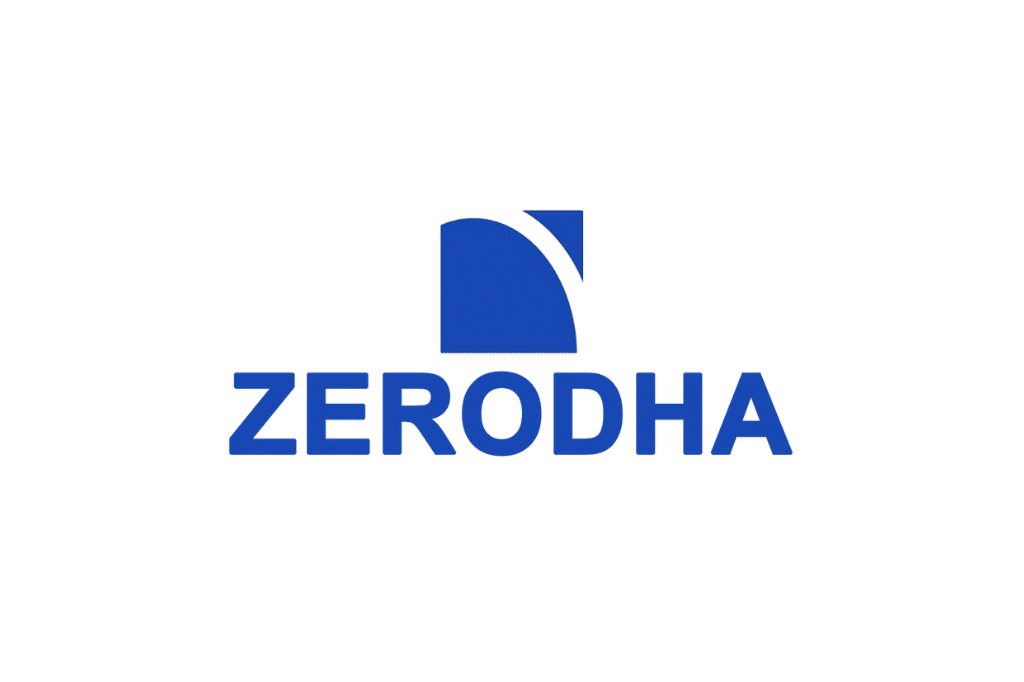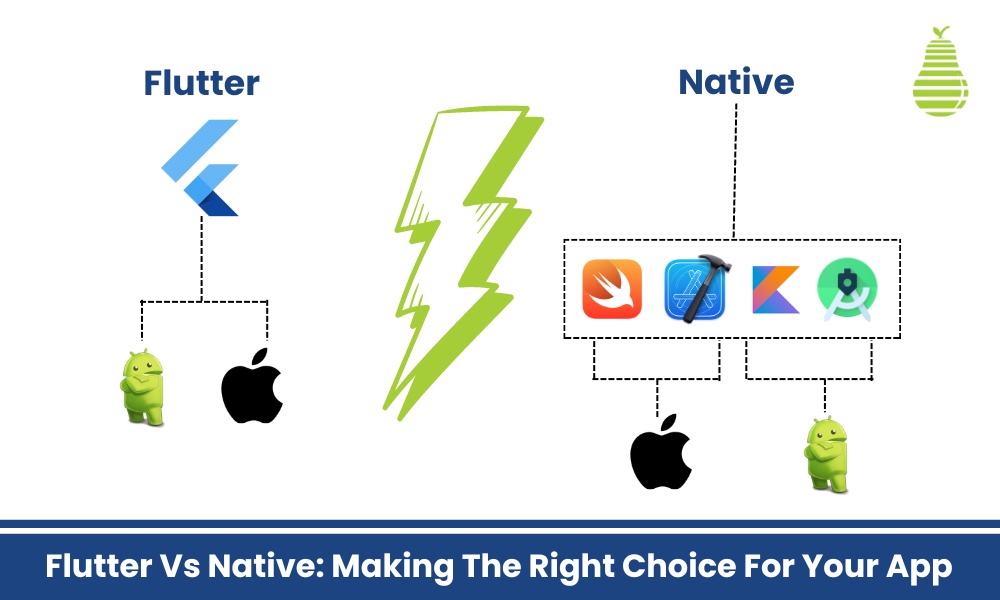When you think about developing a new app, there are several questions to be considered.
The app must be superfast and smooth, or does it just need to function well?
How much time do you have to develop it for all platforms?
What is the vision for future features and updates?
Most importantly, how is the budget?
And with these questions, you decide what software to be used for development. Speaking about development, a crucial decision is choosing between Flutter and native app development? There are specific advantages and disadvantages, and the final choice is always influenced by your needs.
So now, we’ve written a blog that takes into consideration the various factors that you should keep in mind while you choose between Flutter and native app development. We’ll be going through a couple of these factors below, keep reading!
The Allure of Flutter: Cross-Platform Development with Speed
Flutter is a cross-platform framework developed by Google, and acts as the bridge between various platforms like Android and Apple, integrating both with just a single codebase.
This will in turn positively impact development times while lowering costs as compared to native development. This happens because developing natively basically means that you need separate codebases, while Flutter is all about a unified codebase.
Did you know that according to a Statista survey, over 42% of software developers use Flutter?
How Flutter shines, specifically
Here are the ways in which Flutter triumphs over native development:
Rapid Prototyping and MVP Development: Flutter has a feature called hot reload, that allows for near instantaneous updates. This helps if you want to move an MVP out quickly to let the market do its magic (testing it in the market).
A design that’s consistent across platforms: Flutter’s got a rich set of widgets that render consistently across platforms. What this does is that it ensures a uniform user experience for both iOS and Android users alike, helping maintain brand consistency.
Cost-Effectiveness: Flutter’s single codebase consolidates development efforts. This will in-turn lead to reduced development costs, acting as a rather significant advantage for startups/businesses with limited budgets.
Where Flutter lacks, however little
App Size: Compared to native apps, Flutter apps are a bit larger in size as compared to native apps. Don’t worry though, advancements are being made in order to address it, but it’s still a factor. This comes out like a sore thumb for users with limited data plans or storage space.
Performance Overheads: When Flutter apps are hit with complex graphical tasks/animation-heavy processes – they experience a drop in performance. It’s primarily because Flutter uses a layered architecture, leading to overheads while rendering elements.
Native Development: Power and Performance at its Peak
Native app development involves using platform-specific languages (Java/Kotlin for Android and Swift/Objective-C for iOS). This approach offers several benefits:
Unmatched Performance: For graphically intensive apps, native apps work wonders as they’ve got direct access to a device’s hardware and functionalities. This leads to a performance that’s super-smooth.
Seamless Integration: Native development allows for effortless integration with features that are device-specific such as GPS, camera and sensors. This is super-important for apps that rely heavily on these functionalities.
Superior User Experience: Native apps leverage the specific design guidelines and functionalities of platforms, resulting in a rather natural and intuitive user experience for both Android and iOS users alike.
While native development offers undeniable advantages, there are also drawbacks to consider:
Development Time and Cost: When you go to build separate codebases for each platform, you end up adding to increased development time and cost. This isn’t considered ideal for projects with tight deadlines and limited resources. A survey by Stack Overflow in 2022 showed that only a third of mobile developers use cross-platform technologies.
Maintenance Challenges: Maintaining two separate codebases consumes a humongous amount of time and energy, especially as features evolve and updates are required.
Read About Flutter Vs React Native – From Developer Point Of View??
Finding the Right Fit: Considerations for Your App
Now that you know both advantages and disadvantages, here’s a breakdown of how each approach aligns with your needs:
Flutter: When you’ve got rapid development, consistent user experience and cost-effectiveness as your top priority – Flutter is a brilliant option. But the potential for a larger app size demands careful consideration. You can explore techniques for reducing code size that’s offered by Flutter framework.
Native Development: If you want an app that’s more performance dependent, demands deep integration with native features and a platform-specific UI – native development might be the way to go. Make sure to factor in the increased development time and cost.
We're Here to Assist You!
Ready to Enhance Your Project?
GET SUPPORT NOWConsidering Third-Party Integrations
Integrating charts and other third-party tools in Flutter is a challenge. Native development offers a smooth integration process, but currently the landscape for Flutter integrations is constantly evolving. With that, the pub.dev package repository is a valuable resource for Flutter developers, boasting an ever-growing number of third-party solutions.
But what does it mean in real-life?
If we talk about a real-life example, let us share some conclusions of a case study. Versal Bank, part of Société Générale International Financial Group, wanted to create a new version of their mobile banking app. It was done using Flutter, and we can understand the below from the case study:
- Cross-platform development significantly reduced the app development cost.
- The new application got created within a short timeframe, indicating efficiency.
- It was easy to integrate the new app with the legacy backend banking services, without any compromise on the performance.
- Flutter allowed management of multiple companies due to its flexibility and scalability.
This was from an enterprise perspective.
When a mobile app developer used Flutter to develop an app that records mood and memories like a journal, below were the observations:
- Fast coding and Hot Reload feature let you see changes instantly.
- There’s extensive widget library and animations
- Packaging and deploying apps are pretty straightforward.
- Integration with Google’s Fuchsia OS makes it a key player in the future of app development.
How Flutter augmented Dow Jones
Dow Jones required an application that was to be delivered by a super-tight deadline. The app to be made was a stock market trading game that allowed users to see how their virtual portfolio is performing, including real-time updation.
With Flutter, Dow Jones experienced:
- Meeting deadlines effortlessly with pre-made widget libraries and features like hot reload wherein changes are reflected in an instant.
- The app was launched in just 3 months!
- Animations were created in Flutter’s library itself, again reducing time to market.
- Increased development efficiency and a 50% reduction in overall development cost.
Zerodha and Flutter: The Flutter Effect

Developing first and foremost for Android, Zerodha faced some tough challenges while they wanted an app that worked on both iOS and Android. The app to be developed was a live trading app, and is currently the company’s flagship product, Kite.
Challenges to be navigated:
- Getting an app that works on both Android and iOS, the initial app worked well on Android but didn’t developed app for iOS.
- They switched to React Native, which worked well with iOS. But, it didn’t work well with Android now. The platform tables were turned.
- The app faced many issues with regard to stability, bugs and other framework-related issues.
Challenges while maintaining 2 separate codebases:
- Increased Development and Maintenance Efforts: Developing and maintaining 2 separate codebases demands the devotion of time and resources. Both native Android and React Native for iOS requires their own set of development tools and environment setups.
- 2 Teams: Both iOS and Android require separate teams to develop. Not only to develop, but to also upgrade, implement features and navigate bug fixes.
- The UX part: To ensure a uniform user experience across both platforms (that too with different codebases) is not an easy endeavour. Each platform has its own set of design guidelines, sticking to them will ultimately lead to variation in the app’s interface.
Solutions given by Flutter:
- One codebase for both iOS and Android, leading to a rather simplified development process.
- Fewer third-party dependency issues like they used to have with the React Native platform.
- Performance that stood unmatched, owing to the real-time features of their trading app.
With the many advantages, there were also a couple of challenges while developing with Flutter:
- Graphics Glitches: A couple of times, graphical bugs seemed to have affected the app’s visuals.
- Shader Compilation on iOS: This caused initial slowness with respect to animations until the system had warmed up adequately.
- Native Library Handling on Android: There were issues regarding the management of libraries on certain Android devices that led to app crashes and extra storage usage.
Kite went through the following changes once it was paired with Flutter:
- Zerodha achieved consistency with a single, unified codebase that streamlined the interface and reduced development and maintenance costs.
- The same developer team could manage both platforms in tandem, leading to inherently faster development cycles.
- They also experienced way fewer unexpected breakdowns and compatibility issues while developing with Flutter.
Conclusion
There’s no one-size-fits-all answer when it comes to choosing between Flutter and native development. Here’s a quick recap to aid decision:
Choose Flutter if:
- You require rapid development and MVP creation.
- Consistent user experience is your top-most priority.
- You need to be as cost-efficient as possible.
- App size can be optimized using Flutter’s code reduction techniques.
Choose native development if:
- Unmatched performance is super essential for your app.
- Deep integration with native features like GPS/camera is a necessity.
- Platform-specific user experience is necessary for Android and iOS users.
With that, remember one thing – there’s no silver bullet. Consider a hybrid approach if your app’s got specific functionalities that benefit from native development while you leverage Flutter for the rest.
Website : https://bosctechlabs.com/flutter-vs-native-app-development-making-the-right-choice/


No comments yet